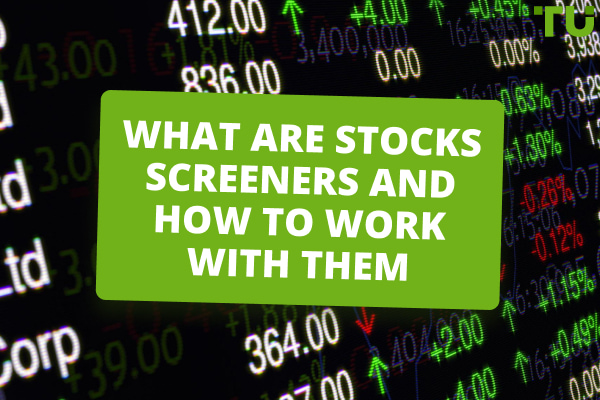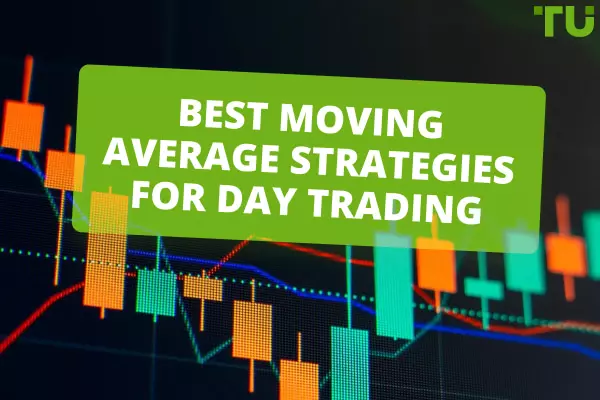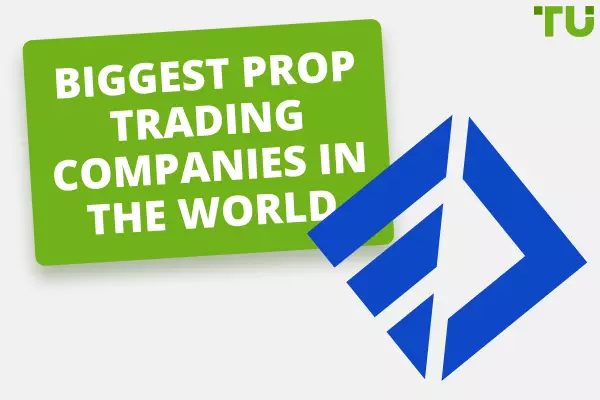Optimal Lot Size You Can Trade in Forex
When you dip your toes in the world of Forex trading, you'll be acquainted with the fundamental concept of trading lots. And understanding how many lots to trade along with its optimal size is imperative for novice traders.
The size of the lot determines a trader's trade volume and plays a substantial role in their account position.
But one of the common questions that newbies ask is:
What lot size should they use?
And how many lots can they trade in Forex?
Therefore, this piece drafted by Traders Union experts shares the intricacies behind the same that will prevent you from blowing your Forex account.
The number of lots you can trade in Forex usually depends upon several aspects like: your risk appetite, broker (you use), and account size.
What is a typical Forex lot size?
In its usual sense, a Forex lot size is the measurement unit that standardizes the size of a trader's trade. When trading in the Forex market, a trader gets access to and can pick among different lot sizes based on their goals, account size, requirements, and risk appetite.
Speaking of the lot size then, these are the three types that you'll often come across:
Standard
In simpler terms, a standard lot is equivalent to 1,00,000 units of currency per contract.
Usually, this type of lot size is typically used by experienced Forex traders with larger accounts.
Mini lot
Going down the lot size ladder, you'll hit the mini lot. A mini lot is the one-tenth size of the standard lot, encompassing 10,000 units of base currency.
Micro lot
Moving down from the mini, you'll come across the micro lot. It's even smaller and contains 1,000 units of base currency.
How many lots can I trade with $10,000?
There are numerous factors which can influence the size of the lot. To begin with:
The first factor which affects is the trader's account size. There's a positive correlation between the account size and the lot size. The larger the account size, the more significant the lot will be.
Second is the risk tolerance level of the trader. A higher risk tolerance level yields a higher lot size. And vice-versa.
The third one is that different currency pairs have distinct minimum lot sizes due to their volatility and liquidity characteristics.
The fourth and last one is the choice of the broker. You see, different brokers have diverse lot sizes. Therefore, it's recommended to choose a reliable broker.
Meanwhile, we've outlined different trading scenarios per leverage to better grasp the concept.
Scenario 1: No Leverage
In case of no leverage, you can trade only with the available balance, which is $10,000.
So, the standard lot size is around 100,000 units.
Thus, the lot size that you can trade is:
$10,000 / 100,000 = 0.1 standard lots
Scenario 2: 1:10 Leverage
With 1:10 leverage, you can control the position size 10 times your available balance. For every 10 dollars the broker lends you, they require you to maintain a margin of $1.
Thus, the amount is:
$10,000 x 10 = $100,000
Based on the amount, the lot size that you can trade is:
$100,000 / 100,000 = 1 standard lot
Scenario 3: 1:30 Leverage
In the case of 1:30 leverage, the position size you can control is 30 times your available balance ($10,000). For every 30 dollars the broker lends you, they require you to maintain a margin of $1.
Thus, the amount is:
$10,000 x 30 = $300,000
The lot size that you can trade is:
$300,000 / 100,000 = 3 standard lots
What is the best lot size for different accounts?
The best lot size for different accounts relies on three aspects: capital, risk management skills, and pips.
Having moderate leverage for different account sizes, along with a proper risk management strategy during trading, will pave the way for lesser risk and better profits.
What is the best lot size for a $10,000 account?
If you have an account balance of $10,000 and are willing to risk 3% of it on each trade, then the maximum amount you can risk per trade is $300.
3% of $10,000 is $300
In this case, you could trade up to 30 mini lots (each of 10,000 units), as each pip movement for a mini lot is generally worth around $1.
30 mini lots * $1/pip = $300
A trade movement of just 1 pip in the wrong direction would make you lose $300, which is 3% of your account balance.
Note: This approach is aggressive and leaves you open to significant risk.
What is the best lot size for $5000
If you have an account balance of $5,000 and are willing to risk 3% of it on each trade, then the maximum amount you can risk per trade is $150.
3% of $5,000 is $150
In this case, you could trade between 1 to 2 mini lots, as each pip movement for a mini lot is worth around $1.
1 mini lot * $1/pip = $150 (exact risk)
2 mini lots * $1/pip = $300 (would exceed the 3% risk)
Alternatively, you could trade 10 micro lots, where each pip movement is worth around $0.10.
10 micro lots * $0.10/pip = $150
You're being more conservative here, risking only 3% of your trading account.
Note: These are simplified examples. The real world of Forex trading involves other costs like spread and commission, as well as more complex scenarios of leverage and volatility. Always remember to implement proper risk management protocols and ensure that you consult your financial advisors for advice before undertaking your trading ventures.
Can I trade Forex with $1,000 and less?
Yes, you can. And if you're wondering about the optimal lot size for $1,000 in your Forex account, then if you have the leverage, the ideal size is a mini lot, and if there's no leverage, then a micro lot will be the ideal size.
Note: Depending on the country, the recommended lot sizes are subject to change, as different Forex brokers offer distinct leverages.
How much is 0,01 lot in EUR/USD?
0,01 lot means 1,000 units of the base currency. Now, if a trader trades a EUR/USD pair and purchases a 0,01 lot, it simply indicates they are buying 1000 euros.
Furthermore, the value of the pip in the context of 0,01 lots will be $0.10.
Note: Both 0.01 & 0,01 represent the same value; only the formatting varies by location and cultural norm. On most of the Forex trading platforms, the standard international way of representing decimals is with a period, so you would likely see 0.01. However, the underlying value remains the same regardless of its representation.
Best Forex brokers 2024


FAQs
How much is 1 lot in USD?
1 lot is equivalent to $10 based on the EUR/USD.
Can a conservative trader trade with standard lot sizes?
It's recommended not to trade with standard lot size if you're a conservative trader, as the risk associated with it can be too significant.
How many units can a trader purchase with $50 with a leverage of 1:100?
To calculate the number of units you can buy with $50, you need to multiply $50 with lot size. Let's say it's a micro lot; with 1:100 leverage, the calculation will be $50*100= 5,000 units.
Does it matter to match your trading style and risk toleration when deciding the lot size?
Yes, matching your trading style and risk tolerance matters when you decide.
Glossary for novice traders
-
1
Broker
A broker is a legal entity or individual that performs as an intermediary when making trades in the financial markets. Private investors cannot trade without a broker, since only brokers can execute trades on the exchanges.
-
2
Trading
Trading involves the act of buying and selling financial assets like stocks, currencies, or commodities with the intention of profiting from market price fluctuations. Traders employ various strategies, analysis techniques, and risk management practices to make informed decisions and optimize their chances of success in the financial markets.
-
3
Leverage
Forex leverage is a tool enabling traders to control larger positions with a relatively small amount of capital, amplifying potential profits and losses based on the chosen leverage ratio.
-
4
Forex Trading
Forex trading, short for foreign exchange trading, is the practice of buying and selling currencies in the global foreign exchange market with the aim of profiting from fluctuations in exchange rates. Traders speculate on whether one currency will rise or fall in value relative to another currency and make trading decisions accordingly.
-
5
Risk Management
Risk management is a risk management model that involves controlling potential losses while maximizing profits. The main risk management tools are stop loss, take profit, calculation of position volume taking into account leverage and pip value.
Team that worked on the article
Upendra Goswami is a full-time digital content creator, marketer, and active investor. As a creator, he loves writing about online trading, blockchain, cryptocurrency, and stock trading.
Dr. BJ Johnson is a PhD in English Language and an editor with over 15 years of experience. He earned his degree in English Language in the U.S and the UK. In 2020, Dr. Johnson joined the Traders Union team. Since then, he has created over 100 exclusive articles and edited over 300 articles of other authors.
Mirjan Hipolito is a journalist and news editor at Traders Union. She is an expert crypto writer with five years of experience in the financial markets. Her specialties are daily market news, price predictions, and Initial Coin Offerings (ICO).









